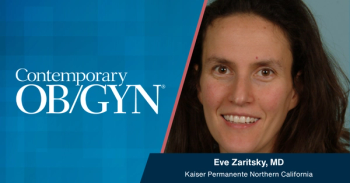
Cervical Insufficiency protocol
In this chapter, Dr. Owen reviews the diagnosis or cervical insufficiency; patient selection for history-indicated (prophylactic), physical examination-indicated (Emergent), and ultrasound-indicated (urgent) cerclage; placement and removal of cerclagel and adjunctive therapies.
AUTHOR: JOHN OWEN, MD, MSPH, DEPARTMENT OF OBSTETRICS AND GYNECOLOGY, DIVISION OF MATERNAL-FETAL MEDICINE, UNIVERSITY OF ALABAMA AT BIRMINGHAM, BIRMINGHAM, AL.
As the author notes, contemporary evidence suggests that cervical insufficiency is poorly defined, lacking objective and reproducible criteria. It may be more effectively conceptualized as 1 factor in the complex syndrome of spontaneous preterm birth. Deciding whether an individual patient has a significant (and treatable) component of insufficiency requires significant clinical judgment.
• Most women with a clinical diagnosis of cervical insufficiency have ostensibly normal cervical anatomy. Because there are few, if any, proven or practical objective criteria for cervical insufficiency, a careful review of a patient's history and past obstetric records is essential.
• Some women with cervical insufficiency have antecedent chorioamnion rupture or clinically apparent uterine activity. Vaginal bleeding may occur with cervical dilation, although the diagnosis of placental abruption should direct one away from cervical insufficiency.
• Criteria for physical examination are based primarily on case series and comparative studies of women who present with "silent" cervical dilation of at least 2 cm with visible membranes at or beyond the internal os on a speculum examination. Common symptoms include a sensation of pelvic pressure, vaginal discharge, urinary frequency, and the absence of regular painful contractions.
• The most commonly cited criterion for diagnosis of cervical insufficiency on vaginal sonography is a mid-trimester cervical length <25 mm, but it is actually a poor predictor of preterm birth in low-risk women. However, it is well documented that women with progressively shorter cervical lengths have correspondingly higher rates of preterm birth, and this effect is amplified in women with a prior spontaneous preterm birth.
• Women who meet clinical criteria for the diagnosis of cervical insufficiency should be counseled about the risks and benefits of (history-indicated) cerclage, which include potential for increased perinatal survival and risks associated with anesthesia and surgery, respectively. Cerclage generally is performed at around 14 weeks after sonographic confirmation of a normal-appearing fetus and confirmation of negative screening results for known cervical pathogens.
• Existing evidence from case series, retrospective cohort studies, and 1 small randomized trial demonstrates measurable benefits from use of physical-examination-indicated cerclage using pregnancy prolongation and neonatal morbidity outcomes. Various techniques have been used empirically to reduce the prolapsing membranes at surgery but none has been systematically compared. Amniotic fluid analysis to select patient for this procedure remains largely investigational.
• The clinical significance of obstetric history in selecting women for cerclage seems irrefutable, and cervical ultrasound can now be recommended to follow high-risk women who have had a prior spontaneous preterm birth <34 weeks.
• A systematic review of pregnancy outcomes comparing ultrasound-indicated versus history-indicated cerclage suggests that women with suspected non-classic insufficiency may undergo mid-trimester transvaginal cervical length assessment to optimize surgical candidate selection.
• The 3 techniques for cerclage are the McDonald, Shirodkar, and Benson (abdominal) procedures. McDonald cerclage is simple to place and easy to remove. Special training and experience are required for the Shirodkar cerclage. Appropriate candidate selection and placement of an abdominal cerclage are generally relegated to specialty centers.
• In the absence of urgent indications, transvaginal cerclage is removed at term, generally 37 weeks' gestation, in anticipation of vaginal birth. Urgent indications for preterm removal include labor, bleeding, non-reassuring fetal status, and membrane rupture.
• In the setting of preterm premature membrane rupture, no study has found a significant benefit from cerclage retention; 1 study documented increased neonatal death (largely due to infection) with cerclage retention.
• Recommendations for perioperative prophylactic antibiotics and tocolytics are largely empiric due to lack of clinical evidence confirming that these pharmacological adjuncts improve perinatal outcomes. Adjunctive administration of progesterone may be recommended because many women who are candidates for cerclage have delivered a prior preterm infant.
• While widely recommended, bed rest has not been confirmed to improve outcomes for numerous types of pregnancy conditions. The recommendation for post-cerclage pelvic rest seems more practical, leaving activity limitations individualized and based on maternal symptoms and pelvic findings.
Newsletter
Get the latest clinical updates, case studies, and expert commentary in obstetric and gynecologic care. Sign up now to stay informed.




















